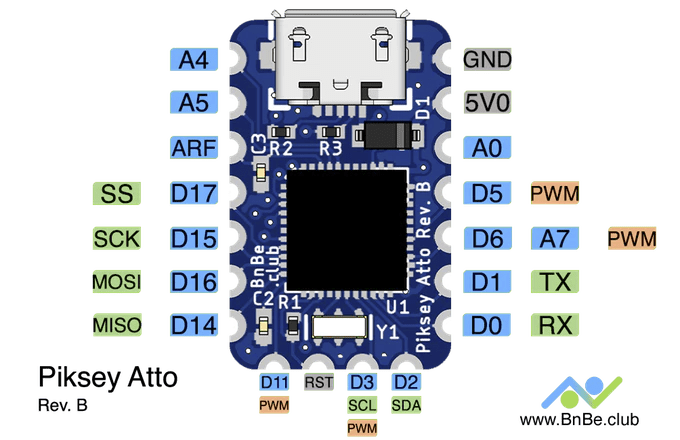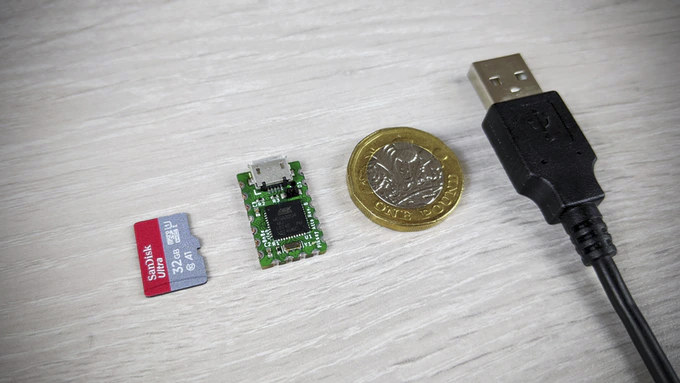Atto is a unit prefix in the metric system denoting a factor of 10−18, so it’s unsurprising that at least one company, namely Nionics, made a small Arduino compatible board called Atto.
But somebody must have forgotten to do a web search, as BitsNBlobs Electronics created their own tiny Arduino compatible board, also named “(Piksey) Atto“, and based on the same Microchip ATmega32U4 8-bit AVR MCU. But there are some important differences as we’ll see below.
Piksey Atto specifications:
- MCU – Microchip ATmega32U4 8-bit AVR microcontroller @ 16 MHz with 32KB flash, 2.5KB SRAM, 1KB EEPROM
- Expansion – 18x castellated through holes for 11 digital I/Os, 4x PWM, and 4x analog inputs, USART/SPI/I2C
- USB – Micro USB port for power and programming
- Power Supply – 5V via micro USB port
- Dimensions – 20.32 x 12.7mm
- Weight – 1.3 grams

The board is compatible with Arduino Leonardo and Arduino Micro, meaning most existing sketches should work out of the box without having to install any board support packages. The company also provides demo projects for the board.
Piksey Allo has launched on Kickstarter with a 7,000 GBP goal, or about $9100 US. I’ll use USD equivalent going forward. Rewards start at $9.1 for a single Atto board, with shipping adding $1.3 to the European Union, $2.6 to the United States, and about $13 to the rest of the world if you need tracking or $6.5 without tracking. Rewards are scheduled to ship in June 2020.
Via Geeky Gadgets

Jean-Luc started CNX Software in 2010 as a part-time endeavor, before quitting his job as a software engineering manager, and starting to write daily news, and reviews full time later in 2011.
Support CNX Software! Donate via cryptocurrencies, become a Patron on Patreon, or purchase goods on Amazon or Aliexpress





